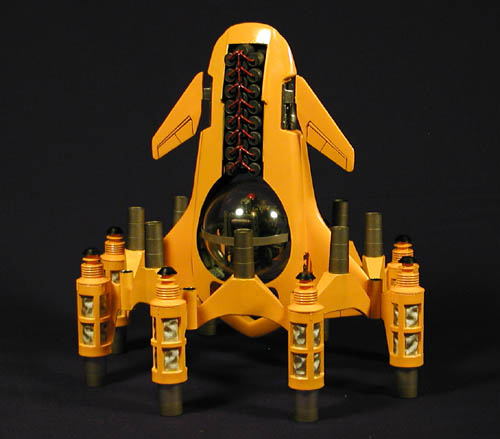
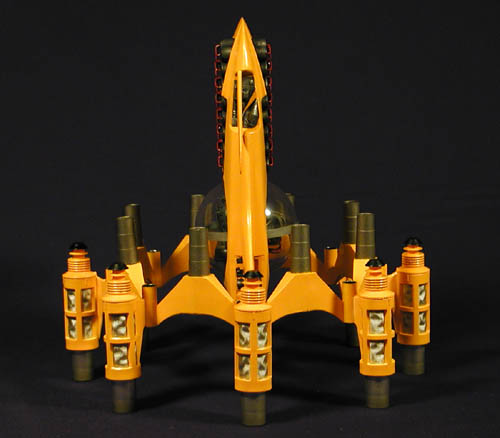
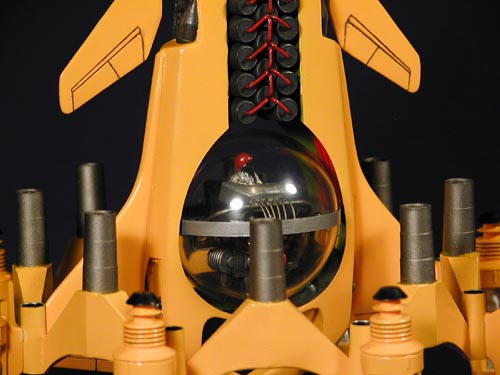
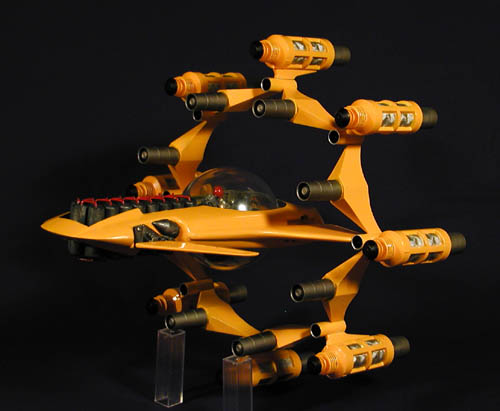
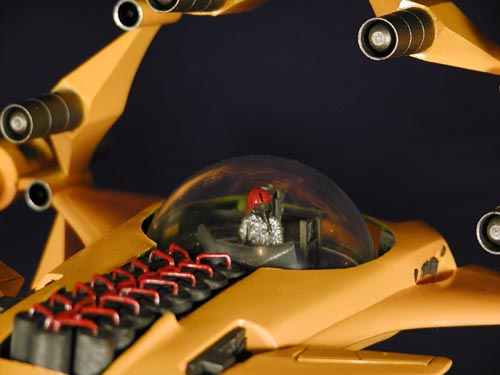
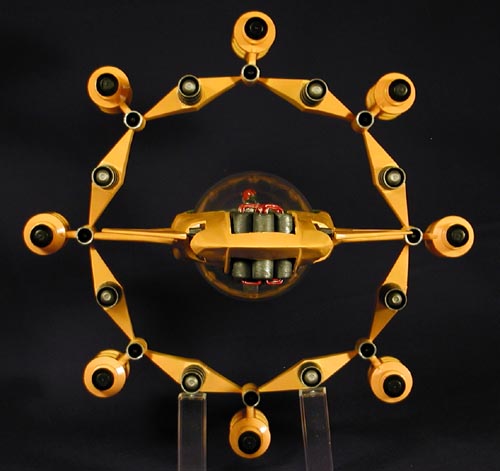
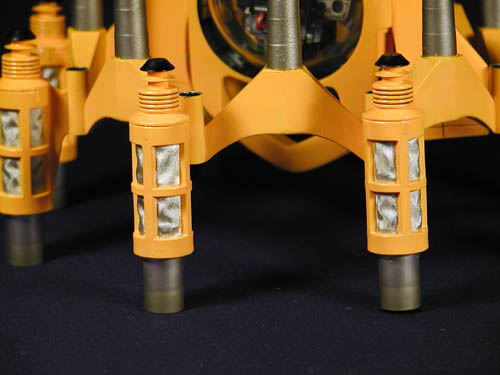
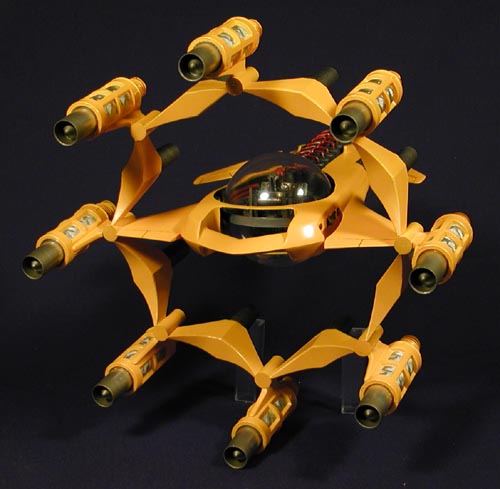
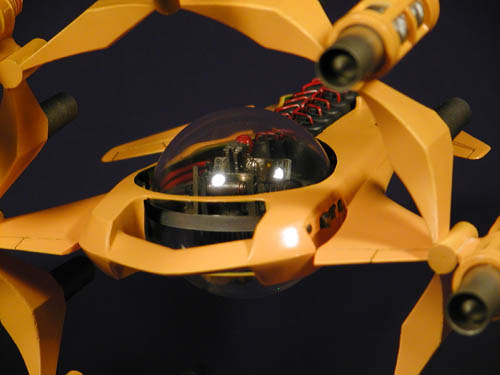
Sci-Fan 2002 brought another special category to the science fiction/fantasy modeling contest--the SpaceRacer. Based loosely on the 1939 short story Habit by Lester Del Rey, the object was to build a one-man ship for an eight day race from Mars to Jupiter and back accompanied by a brief paragraph explaining how your fictional craft won the race. Your source of building material was only limited by your imagination.
Inspired by the Silhouette Show Car recently reissued by AMT/Ertl, I envisioned a craft the would be aerodynamic enough for surface landing and atmospheric maneuvering while still insanely powered for interplanetary racing.
In keeping with the Golden Age sci-fi spaceships I wanted it to be a tail sitter. This led to the unique rotating cockpit ball. Using a clear plastic globe I made a dividing ring and built a cockpit from spare parts and plastic stock. below the seat I cobbled together bits to simulate the computer and environmental equipment that would act as the counterweight keeping the ball upright as the ship rotated.
In order to achieve the symmetry of a classic spaceship two body shells were needed. Naturally this meant using two donor kits--leaving a lot of spare parts for later projects. The wings were taken from two small snap together space shuttle kits. All of the components in the engine ring came various recycled odds and ends from a local crafts shop. Once the arrangement was decided the ring parts were reproduced in resin for greater strength and uniformity.
The view above and below show the cockpit ball in both landing and flight trim. Next to the pilot seat a ladder leads to the bottom of the ball where a circular hatch is engraved into the clear dome. When the ship is in landing position this hatch points down through the open rear structure of the ship.
Viewed from head on or from behind the octagonal shape of the engine ring is obvious. The connecting points between each ring component were approximately 1/16" making the construction rather fragile until the body was installed. A thin brass rod was used at each wing tip to securely connect the ring to the body rather than relying solely on the CA glue bond to hold the weight of the ship. With the body in place it provided the needed stability to the whole assembly.
The only contact to the ground is the eight engine exhaust bells. No part of the ship body rests on the display surface. It was for this reason that I used the brass rod to tie the ring to the body. Without it I was concerned that the glue bond wouldn't be able to hold the weight of the ship. From these pictures it appears that I might have been wrong in that assumption--but it's better to overbuild and be safe rather than have a frustrating failure at the worst possible time...like in the middle of a contest.
In this closer view you can see the separate engine nacelles. The main portion is a vinyl inline filter. The nose piece consists of a conical thumbtack capped by a vinyl tubing plug. The engine bell is a resin casting of a clear plastic nozzle. I settled on this combination because on it's 50's sci-fi look.
The ship's coloring was inspired by the bright colors used in 50's conceptual designs .
